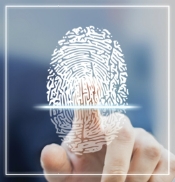
Headlines
News
The not-so-scary truth about biometrics
The subject of installing biometric devices scares many security integrators — therefore the technology has often been avoided in favour of more traditional security hardware.
March 15, 2017 By Roger Miller

Historically, biometric technology has been troublesome, difficult to work with and generally a pain for installers as well as the end user.
Working on large-scale integration projects over the past few years, we have learned some valuable lessons about working with biometrics successfully. We recognized very early on that the integration of biometrics with traditional access control would enable us to meet regulatory requirements while at the same time reducing the number of uniformed security personnel on site.
The targeted reduction in security guards defined an ROI that would be achievable only through the use of biometric security hardware, full height turnstiles, vehicle gates with leading access control and video technology. This all sounds very expensive — but when compared to the cost of 24/7 security guards, the cost was recouped in about 36 months. Beyond the 36 months, our client has achieved significant savings annually, with a greater degree of security.
Now to choose the right technology. Fingerprint, fingervein, retina scan, palm, and others are options available to you. The first lesson learned is that there is no single device that will work in all environments with the same rate of success. You must determine if you will be working with one or more types of biometric devices, and then further determine which device will suit the majority of your authorized personnel.
After trial and error, we opted to use two different devices, fingerprint and fingervein. This decision was based on the different environments indoors (fingervein) versus the harsh weather of being out in the cold unprotected weather (fingerprint). For this article it makes little difference why one performs better that the other, but the success rate is noticeable if both technologies are applied properly. You need to determine if your biometric selection will integrate with your usual access control platform, and test them together. Product supply for warranty, new installations or repair and service should be closely investigated. The higher quality technology is not usually sitting on shelves at your local distributor.
Once the technology was selected, the next step was the installation. This step is very important for many reasons. Placement of the devices has proven to be almost as significant as selecting the proper device. How the device is physically approached may determine if the employee is granted or denied access. You want an ergonomically smooth approach so the biometric scan is not compromised by the person manoeuvring their body into an uncomfortable position that results in inconsistent readings. If the device is too high, too low or beside a door that requires the person move unnaturally, it will affect the success rate. At one point we discussed painting lines on the floor to mark where the person should stand for maximum performance.
The training and enrolment process has to be completed carefully and consistently. Little steps, like remembering which finger they used for enrolment, are important. We have seen users of biometric systems become agitated when they can’t access their workplace, only to find out that they were trying to scan the wrong finger. Even with the best technology there will be a higher rejection rate of biometric scans than traditionally experienced with card access alone. This rate will be low if you’ve done your homework, but if you have several hundred entries per day, even one or two per cent has an impact on your operation.
The integration of biometric devices with your access control system must be supported by redundant technology that will allow system users who encounter a problem to communicate to a guard station for support. We supported all biometric access points with video intercom to a central guard post. This allows the guard on duty to see what is happening, in real time, at entry points using biometrics. In situations where access is denied due to biometric or card read issues they can be managed remotely, while the entire event is recorded on video servers.
The end result is a very effective access control system that integrates the right mix of people and technology to provide a secure workplace.
Roger Miller is the president of Northeastern Protection Service Inc. (www.protectionpartner.ca), a security services company based in Halifax.
Print this page